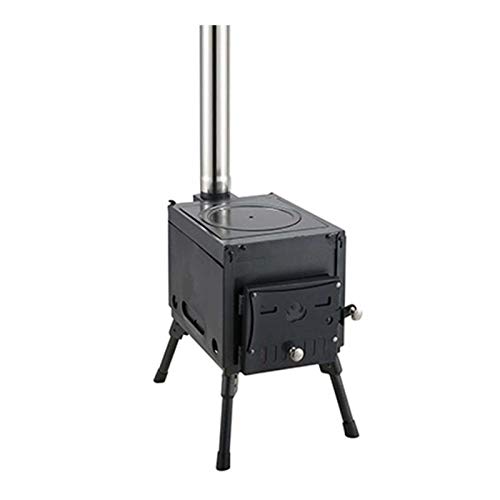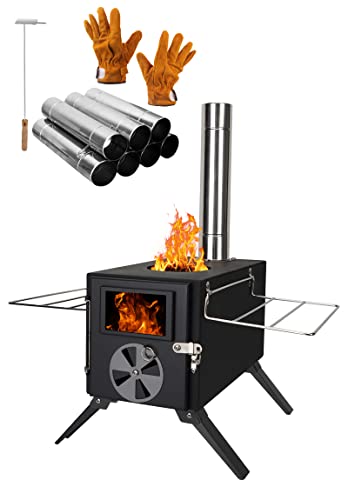20 Fun Details About Wood Burning Stoves
페이지 정보

본문
 Wood Burning Stoves Near Me
Wood Burning Stoves Near MeWood stoves are a elegant and efficient way to heat your house. When you are looking to purchase a new stove, there are some things to think about. This includes the EPA-certified energy efficiency, price and maintenance requirements.
 Avoid becoming "number-bound" and based your decision on a specific rating or BTU output. You should also take into consideration aesthetics, recommendations from a reputable retailer and customer feedback.
Avoid becoming "number-bound" and based your decision on a specific rating or BTU output. You should also take into consideration aesthetics, recommendations from a reputable retailer and customer feedback.Cost
Wood stoves can bring an elegant, stylish flair to any home. They are available in a range of colors and styles that will complement any style. They are a great alternative to costly heating systems. They are also energy efficient and cost-effective. There are several factors to consider prior to purchasing a new wood burning stove. Included in this are the initial price, installation fees, and any additional costs, like chimney liners.
The price of the stove is determined by the model and size you pick. You may be able to locate an open-air wood burner for under PS700. The stove features a huge viewing window that is kept clean with a powerful airwashing system. It also has multi-fuel capabilities, meaning you can burn a variety of fuels.
Noncatalytic woodstoves are less expensive than catalytic models, but they are more difficult to ignite. They also require more fuel to generate the same amount of heat. They also release more particles into the air than catalytic stoves. Despite these limitations, the noncatalytic stove is a good option for many users.
Pellet stoves are another well-known alternative to traditional wood burning stoves. They operate in the same way, but use smaller wood pellets or recycled materials to create the fire and warmth. They are easier to maintain than wood stoves, but they don't have the same amount of warmth.
Whether you're choosing a wood or pellet stove you'll have to factor in the cost of installing venting systems. Some wood stoves require an intake of combustion air from outside, while others require a venting system that connects with chimney. It is possible to have your wood stove inspected by local building inspectors depending on the location you live in and the building codes that are in force in your region.
Installing a best wood burner stoves stove inside an existing fireplace will cost less. However, you'll still have to install a chimney liner and might need to hire an expert to clean the chimney on a regular basis. A freestanding wood stove isn't able to warm all the rooms in a multi-story residence, so you'll need to install radiators to supplement.
Energy Efficiency
Many homeowners are seeking alternatives to traditional heating systems since the price of electricity and natural gas continues to increase. Wood stoves are among the most popular alternatives to traditional heating systems since they are a cost-effective and environmentally sustainable source of heat. They also burn cleaner, reducing the amount of air pollution.
Modern wood-burning stoves are extremely energy efficient, which means they generate more heat in your home, using less fuel. This is due to the fact that modern wood burning stoves have smaller combustion chambers compared to older models. They also utilize an acatalytic combustor which allows them to burn fuel more efficiently. They also produce fewer harmful emissions, which is important if you live in an area that is required to comply with the stricter standards for air quality.
Log burners are also environmentally friendly because they allow you to regulate the amount of air provided to your fire. This allows it to burn at a lower temperature for longer. This reduces the amount of smoke emitted by the fireplace and also prevent the accumulation of flammable creosote in your chimney.
Burning various kinds of wood, including scrap and reclaimed wood, will result in a more efficient fuel mixture that will lower the amount of waste gases generated by the burning. You can even gather unwanted timber that has been discarded from building projects and burn it in your stove. You can save money on wood by doing this.
As a renewable resource, wood is a carbon neutral fuel source. Trees absorb carbon dioxide throughout their growth and release it when they are burned to create a sustainable cycle of life. By using local wood sources, you will also help the local economy and reduce your environmental footprint.
Another benefit of a wood-burning stove is that it can serve as an alternative source of heat in the event an outage in power. If you're able to keep enough logs in storage and wood, you'll be able to keep your home warm for a number of days. You can use your stove to cook and heat water.
Environmental Impact
Based on the type of wood used and the efficiency with which it is burned, the use of wood stoves can have negative environmental and health impacts. The burning of wood releases dangerous gases, like carbon monoxide, nitrogen oxides, as well as fine particulates, referred to as PM (particulate matter). The PM in smoke is made up of a variety of harmful substances such as black carbon, tar, and soot. These pollutants have been linked to a number of health issues such as respiratory diseases and heart disease.
The emissions of wood burning stoves are detrimental to the environment and health. Wood burning can also release volatile organic compounds (VOCs) which are one of the major sources of VOCs inside. VOCs, a type of pollutant, have been associated with a variety of health problems including headaches and irritation to the eyes.
VOCs are formed by incomplete combustion of wood burner stoves for sale. They can harm the respiratory tract, lungs, and circulatory system. They also cause a host of environmental problems that include the loss of biodiversity as well as water quality and soil erosion. In certain areas where the concentrations of VOCs in wood smoke could exceed federally-enforceable standards.
According to a report from Undark, five states have offered incentives to replace older wood-burning stoves with EPA-certified models. However, the majority of these stoves only provide slight improvements over the previous models. Additionally, they are costly and require electricity to run controls, fans and pellet feeders.
In the aftermath, a few environmental agencies are beginning to drop incentives to promote new wood stoves and concentrate on enticing people to switch to alternative heating sources. The State of Oregon, for example requires homeowners to take down wood-burning stoves that aren't certified and encourages them to switch to heat pumps.
Wood stoves are more efficient in energy use than other heating methods, such as gas or electric furnaces. They generate more heat from less small wood burners for sale than their electric or gas counterparts, which makes them a sustainable and affordable option for home heating. They should be regularly inspected and maintained to cut down on fuel consumption and improve efficiency. For instance, taking out unused hoppers and feed systems at the end of the season will reduce rust and ensure that the stove is ready to go again in the fall. Regular cleaning of the stove's chimney vent will also help to prevent the buildup of flammable material.
Safety
Wood burning stoves offer a cozy alternative to heating however, they also pose dangers to fire that could threaten your family's health. Fires can result in smoke inhalation and carbon monoxide poisoning. However, you can safeguard your home and family by taking the proper safety precautions.
Ensure your stove is properly installed and vented. A certified professional should install the chimney, flue pipe and connectors. The chimney should be at least three feet higher than any object which could cause fire. This includes overhanging trees or adjacent buildings. Install smoke and CO detectors in every bedroom and on each level of the home. Connect them all in such a way that they all sound when one goes off. Be sure to check your alarms on a regular basis and cheap wood Burners replace batteries. Keep combustibles like paper, garbage plastics, plastics and so on, away from your stove, and don't burn them there or near it.
Do not leave a wood-burning stove unattended, especially at night. If you are using a best wood burners uk-burning appliance in a sleeping area switch off the heating and open the windows prior to going to go to bed. This will prevent wood smoke from entering the room and causing CO poisoning.
Install an air-cleaning device when you plan to use a wood stove. These systems help to capture and neutralize volatile organic compounds in the exhaust stream before it exits the fireplace. Keep your stove clean, and keep the grate, draft louvers and draft hoods free of ash.
Wood smoke is harmful to everyone, but it is particularly hazardous for children and adults with weakened lungs. It can also trigger respiratory infections and asthma. If you can, avoid using wood-burning stoves on days with high pollution levels. The EPA and states offer daily reports of air quality.
Some new wood stoves are more efficient than older ones, however they release large quantities of pollution into the atmosphere. To minimize your exposure to harmful substances make sure you choose a stove that is EPA-certified as more than 72 percent efficient. Also, burn only dry, seasoned wood. This kind of wood has less toxins and has more energy than fresh, green wood.
- 이전글Three Things You've In Common With Free Chatgpt 25.01.29
- 다음글How to make use of ChatGPT to Jot down A Cover Letter 25.01.29
댓글목록
등록된 댓글이 없습니다.


